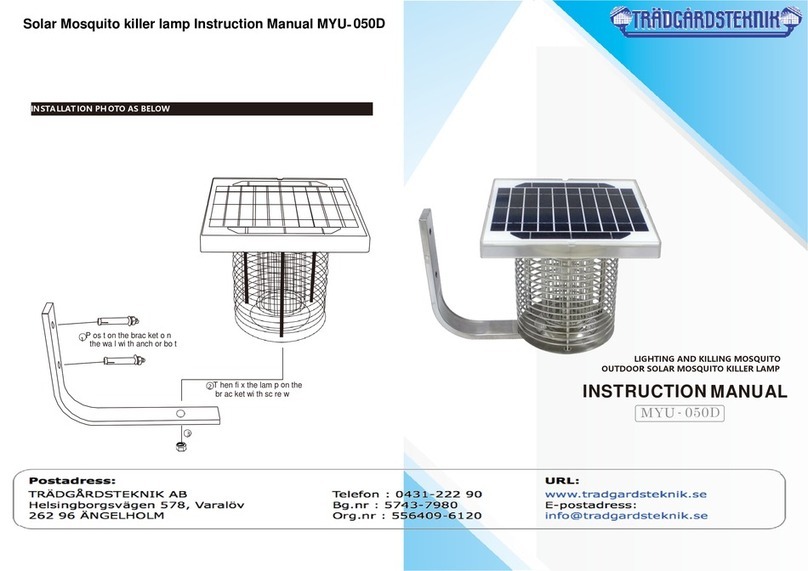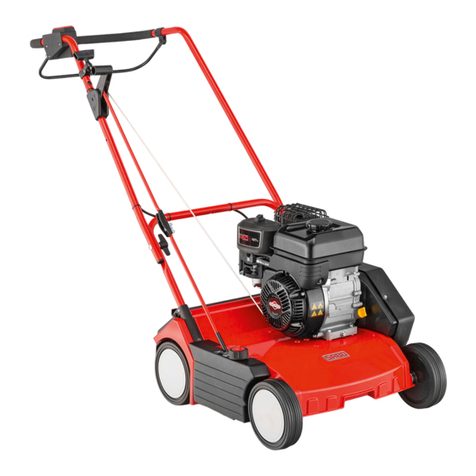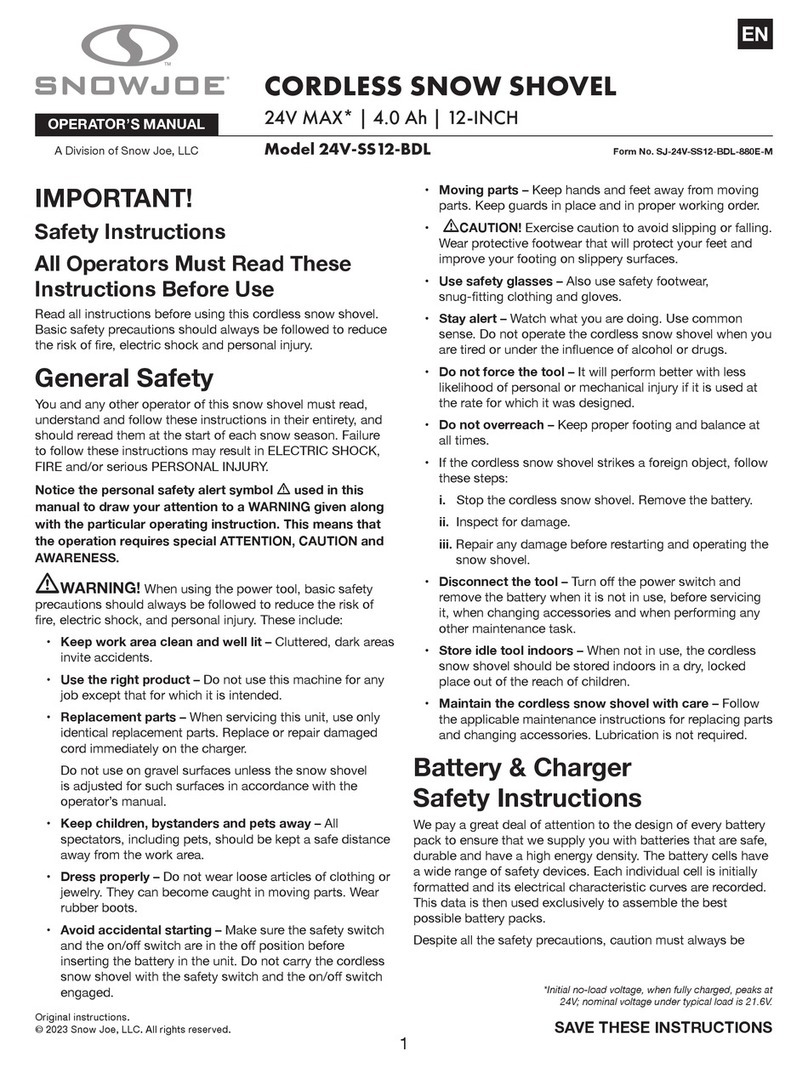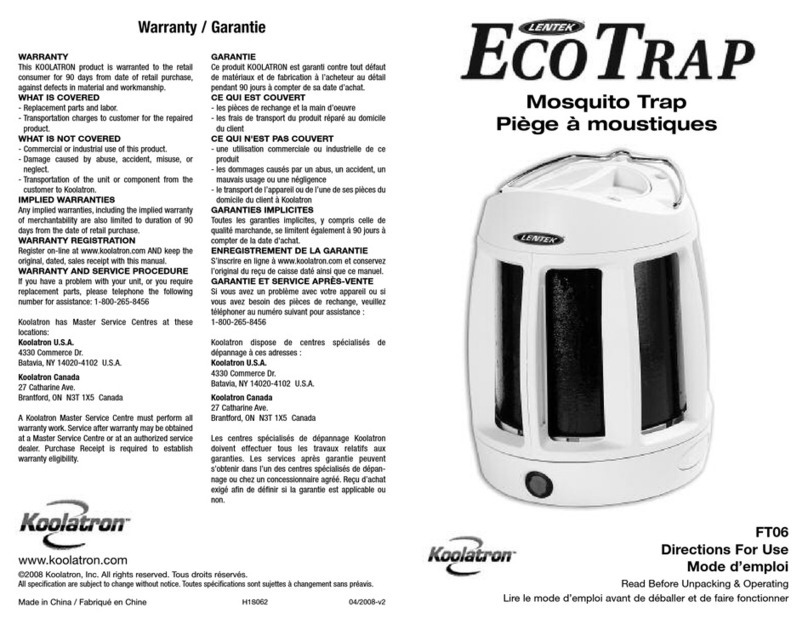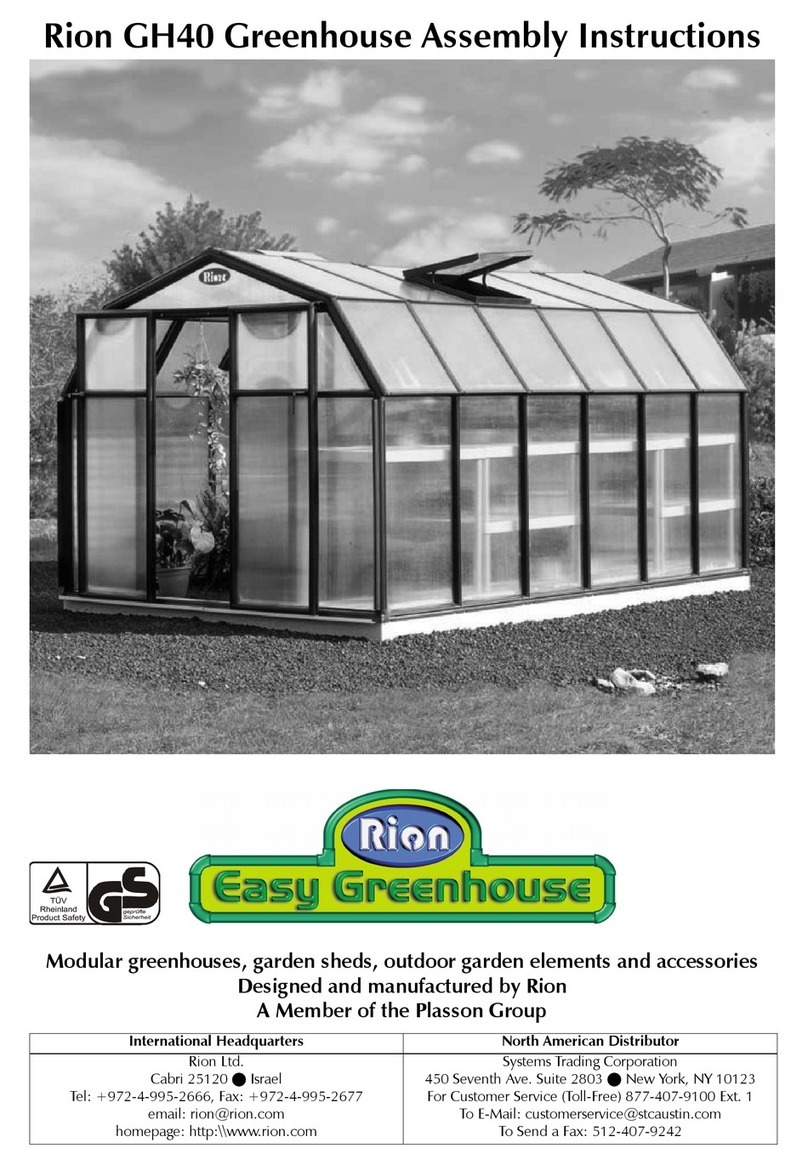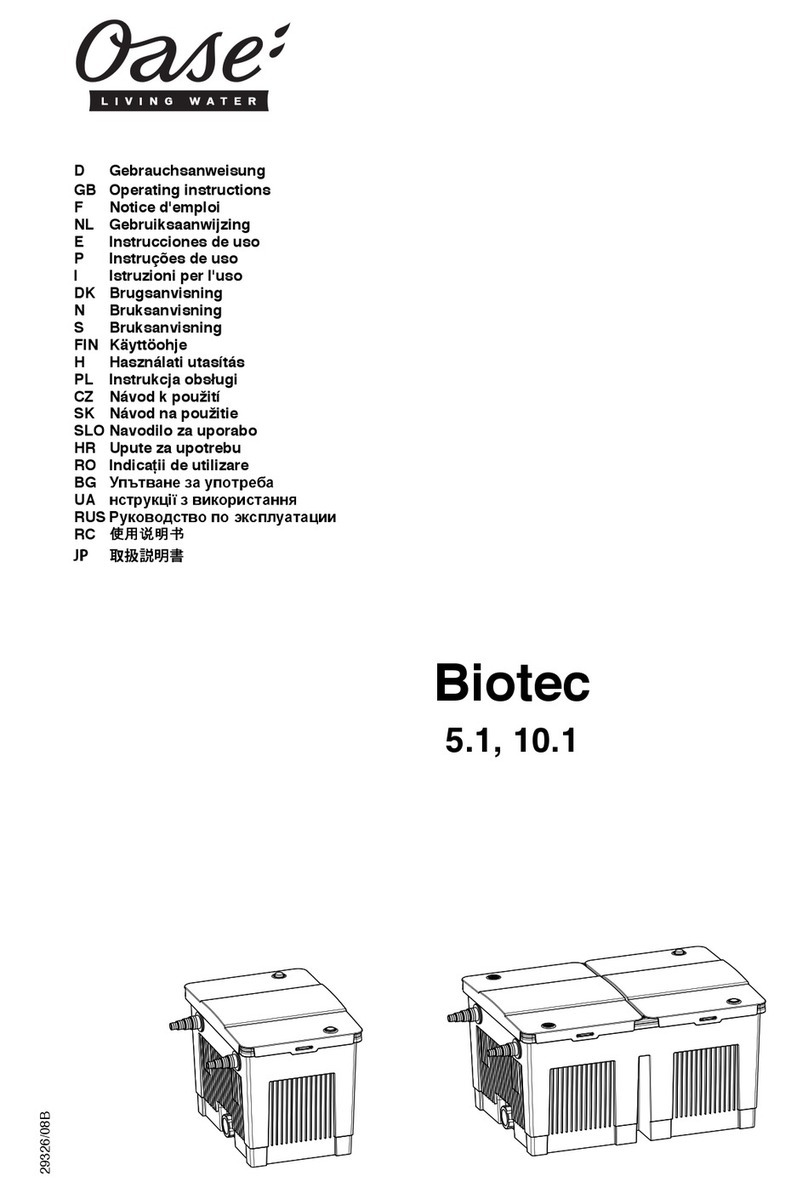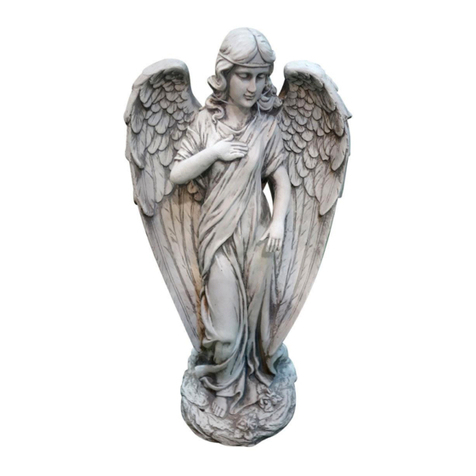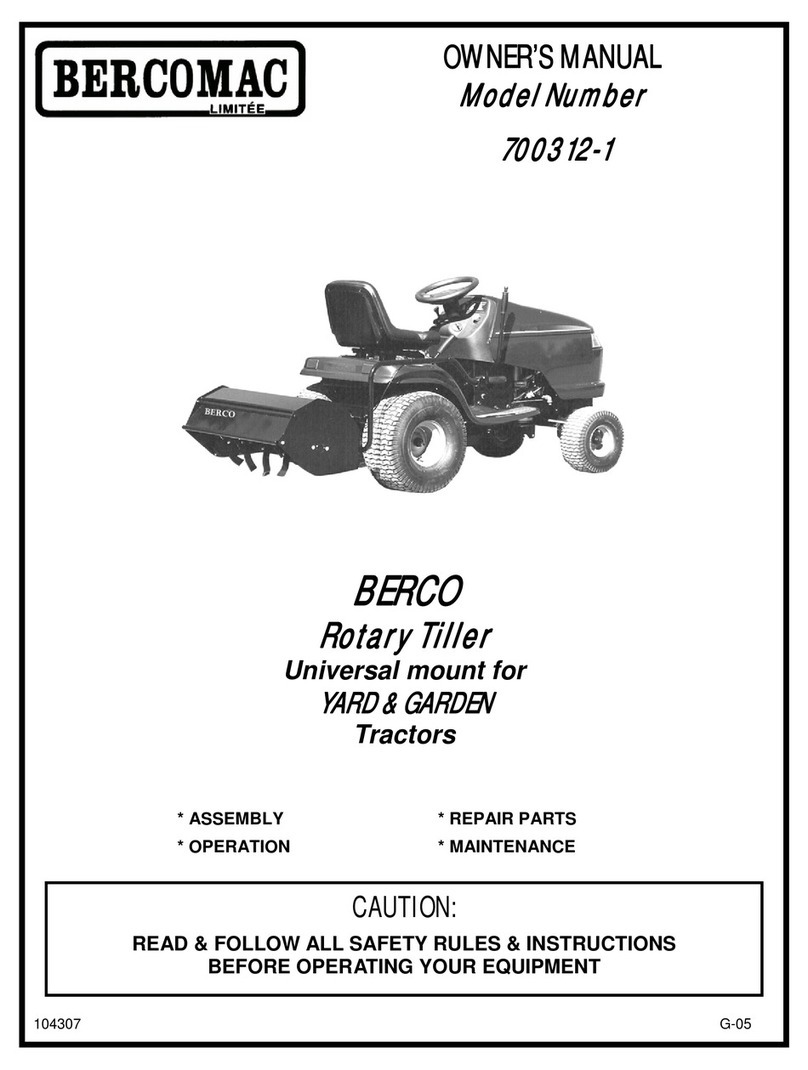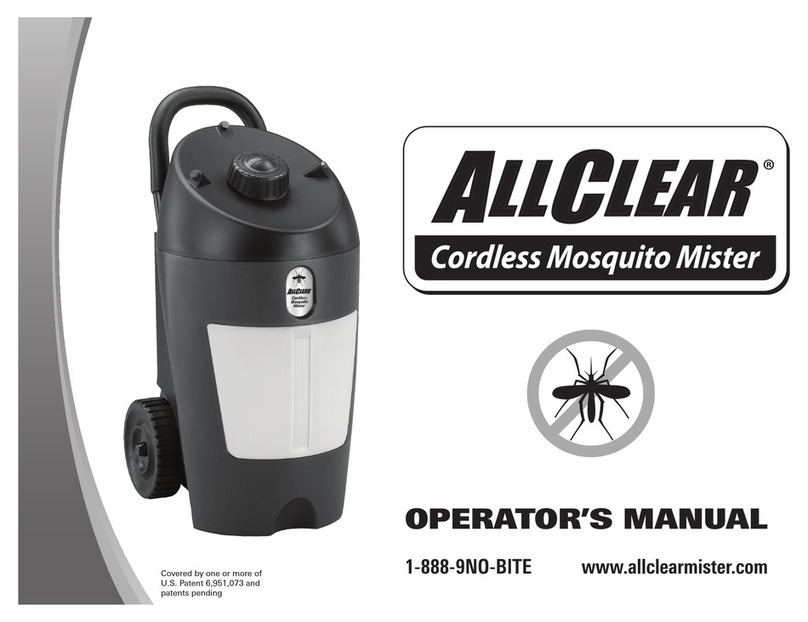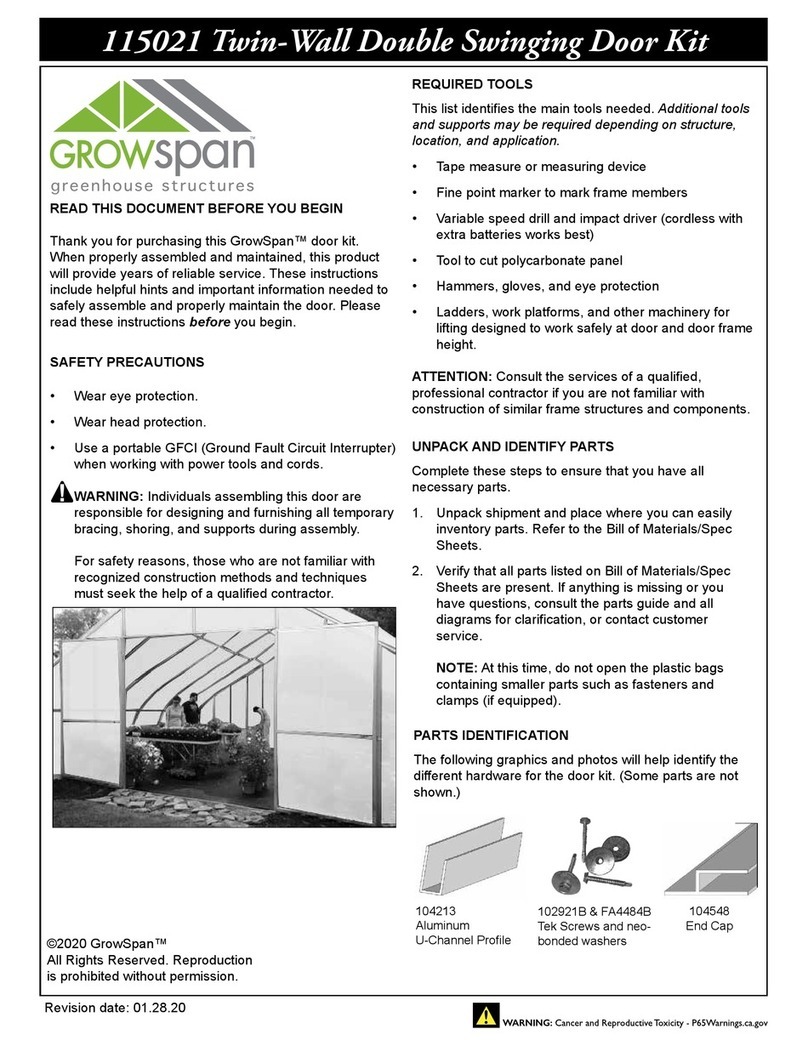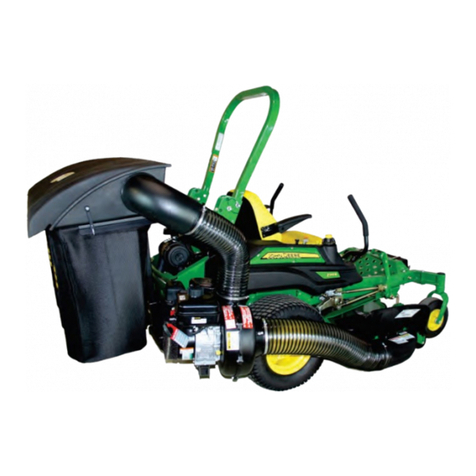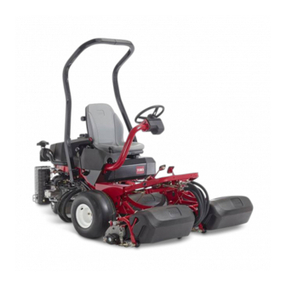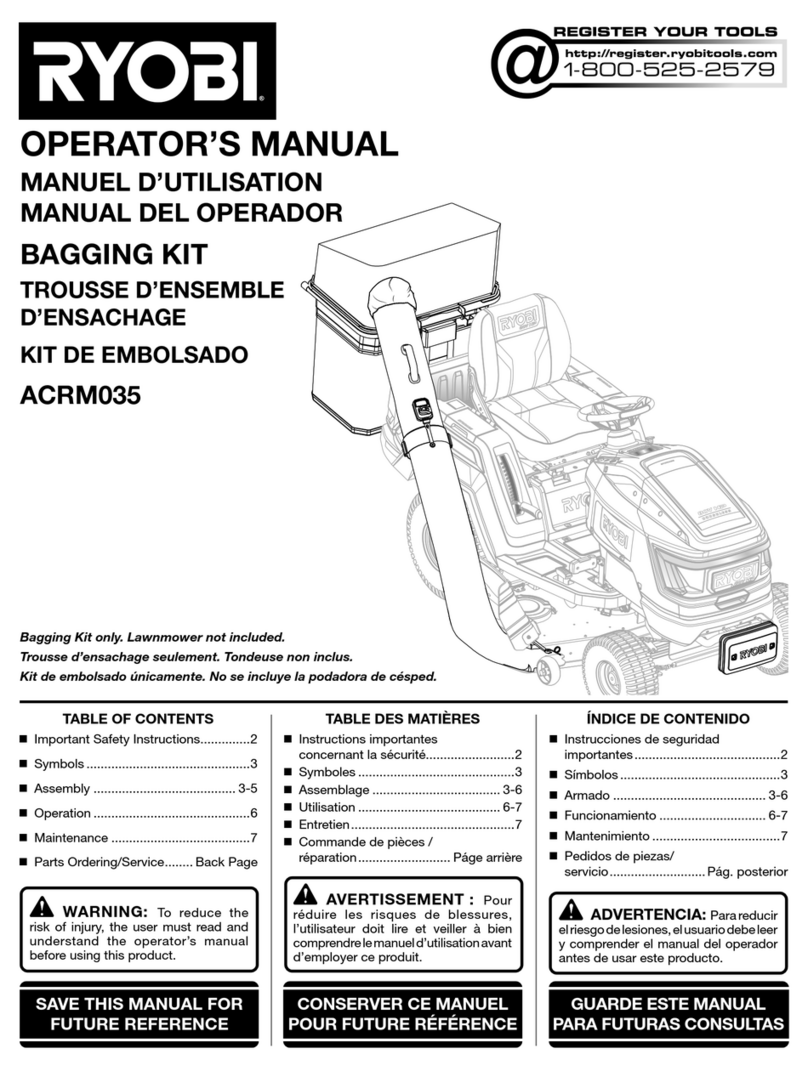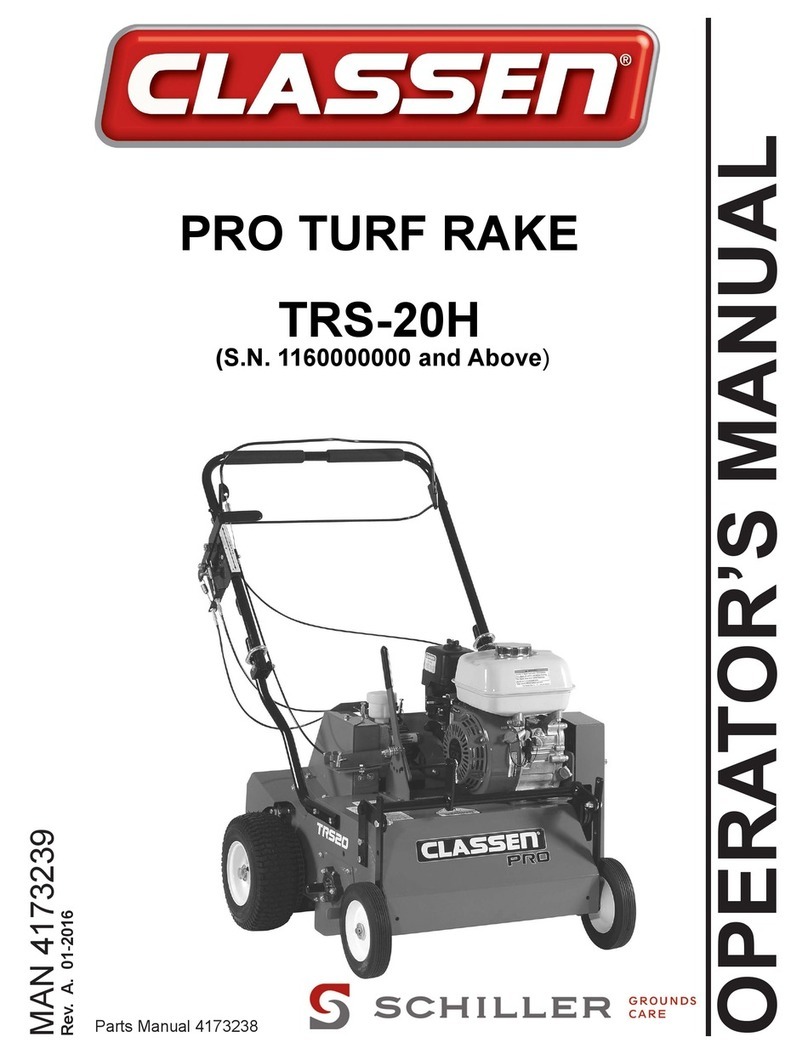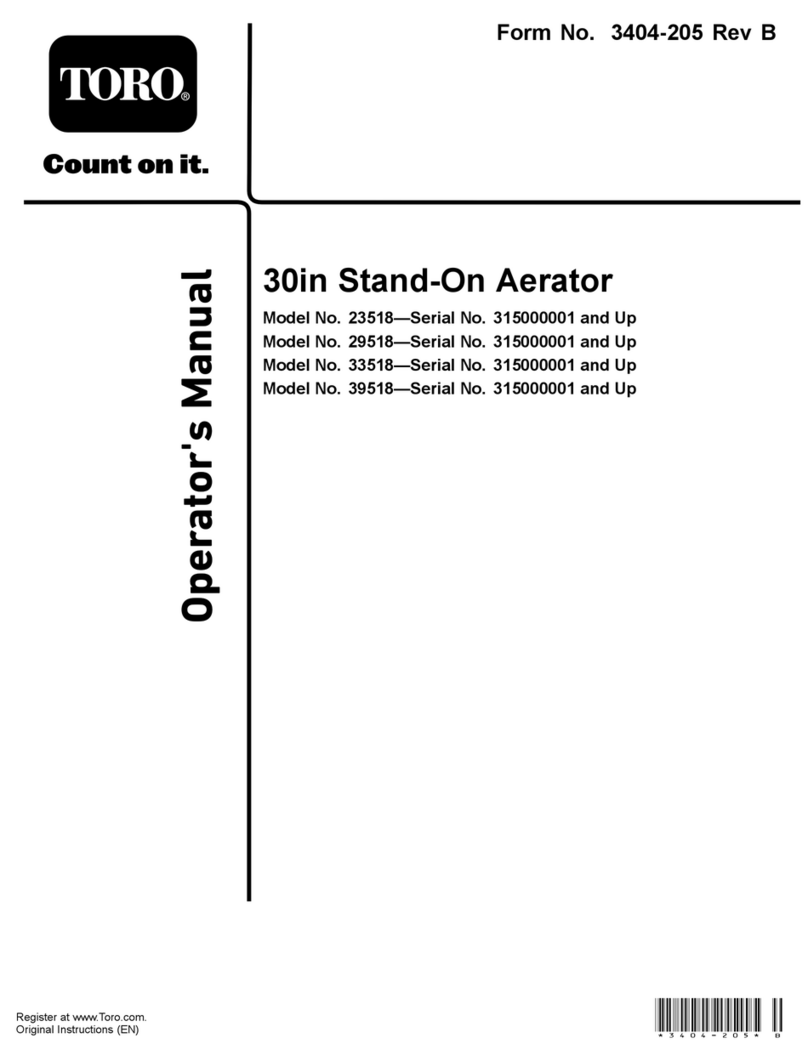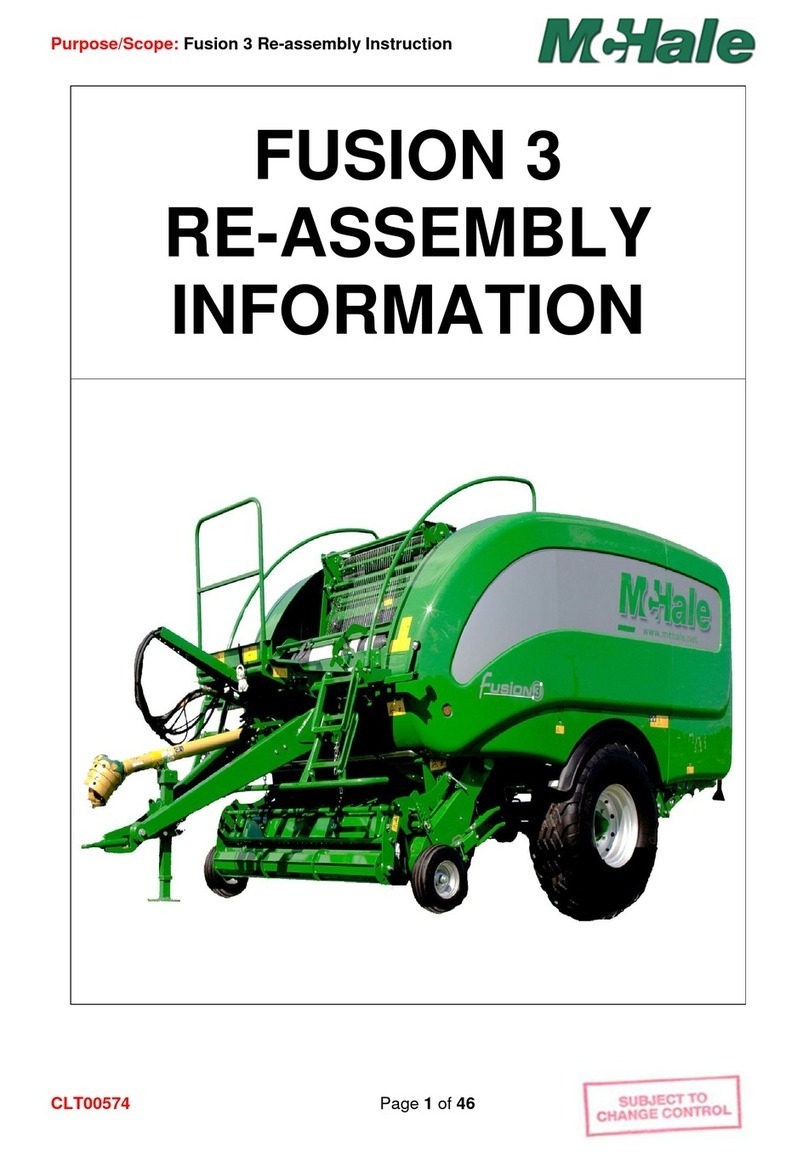Tradgardsteknik GX200 User manual

1
OPERATOR MANUAL DE
GB
FR
IT
NL
GX200

1. Sounding rod
2. Smoke bell
3. Smoke on/off
4. Motor on/off
5. Number of revo
lutions
6. Choke
7. Fuel tap engine
8. Gasoline +
2% Diesel
9. Gasoline
10. 1.5 bar

2.
3. 3.
1.
4.
5. 6.
a
b
a
b
c
d
c
d
a
b
c
d

This manual is protected by copyright. All rights are reserved, especially the right of reproduction,
translation and processing with electronic systems.
INDEX OF CONTENTS
Rodent Destroyer - GX 200
1. Introduction . . . . . . . . . . . . . . . . . . . . . . . . . . . . . . . . . . . . . . . . . . . . . . . . . . . . . . . . . . . . . . . . . . . . . .
1.1 Operation. . . . . . . . . . . . . . . . . . . . . . . . . . . . . . . . . . . . . . . . . . . . . . . . . . . . . . . . . . . . . . . . . . . . .
1.2 Construction . . . . . . . . . . . . . . . . . . . . . . . . . . . . . . . . . . . . . . . . . . . . . . . . . . . . . . . . . . . . . . . . . .
1.3 Field of Application . . . . . . . . . . . . . . . . . . . . . . . . . . . . . . . . . . . . . . . . . . . . . . . . . . . . . . . . . . . .
2. Safety . . . . . . . . . . . . . . . . . . . . . . . . . . . . . . . . . . . . . . . . . . . . . . . . . . . . . . . . . . . . . . . . . . . . . . . . . . .
2.1 Exhaust Gases . . . . . . . . . . . . . . . . . . . . . . . . . . . . . . . . . . . . . . . . . . . . . . . . . . . . . . . . . . . . . . . .
2.2 Burns Hazard . . . . . . . . . . . . . . . . . . . . . . . . . . . . . . . . . . . . . . . . . . . . . . . . . . . . . . . . . . . . . . . . .
2.3 Noise Emissions. . . . . . . . . . . . . . . . . . . . . . . . . . . . . . . . . . . . . . . . . . . . . . . . . . . . . . . . . . . . . . .
2.4 Fuel . . . . . . . . . . . . . . . . . . . . . . . . . . . . . . . . . . . . . . . . . . . . . . . . . . . . . . . . . . . . . . . . . . . . . . . . .
2.5 General . . . . . . . . . . . . . . . . . . . . . . . . . . . . . . . . . . . . . . . . . . . . . . . . . . . . . . . . . . . . . . . . . . . . . .
3. Technical Data . . . . . . . . . . . . . . . . . . . . . . . . . . . . . . . . . . . . . . . . . . . . . . . . . . . . . . . . . . . . . . . . . . . .
4. Starting Up . . . . . . . . . . . . . . . . . . . . . . . . . . . . . . . . . . . . . . . . . . . . . . . . . . . . . . . . . . . . . . . . . . . . . . .
4.1 Preparation . . . . . . . . . . . . . . . . . . . . . . . . . . . . . . . . . . . . . . . . . . . . . . . . . . . . . . . . . . . . . . . . . . .
4.2 Starting the engine (see also operator manual engine) . . . . . . . . . . . . . . . . . . . . . . . . . . . . . .
4.3 Switching off engine . . . . . . . . . . . . . . . . . . . . . . . . . . . . . . . . . . . . . . . . . . . . . . . . . . . . . . . . . . .
5. Maintenance . . . . . . . . . . . . . . . . . . . . . . . . . . . . . . . . . . . . . . . . . . . . . . . . . . . . . . . . . . . . . . . . . . . . .
6. Storage . . . . . . . . . . . . . . . . . . . . . . . . . . . . . . . . . . . . . . . . . . . . . . . . . . . . . . . . . . . . . . . . . . . . . . . . . .
7. Rodent Control . . . . . . . . . . . . . . . . . . . . . . . . . . . . . . . . . . . . . . . . . . . . . . . . . . . . . . . . .
7.1 Searching Out the Rodent Run . . . . . . . . . . . . . . . . . . . . . . . . . . . . . . . . . . . . . . . . . . . . . . . . . . .
7.2 Using the Machine . . . . . . . . . . . . . . . . . . . . . . . . . . . . . . . . . . . . . . . . . . . . . . . . . . . . . . . . . . . . .
7.3 Monitoring Gas Distribution . . . . . . . . . . . . . . . . . . . . . . . . . . . . . . . . . . . . . . . . . . . . . . . . . . . . .
7.4 Preparing the next Rodent Run. . . . . . . . . . . . . . . . . . . . . . . . . . . . . . . . . . . . . . . . . . . . . . . . . . .
7.5 Change of Location . . . . . . . . . . . . . . . . . . . . . . . . . . . . . . . . . . . . . . . . . . . . . . . . . . . . . . . . . . . .
7.6 Destroying the Runs. . . . . . . . . . . . . . . . . . . . . . . . . . . . . . . . . . . . . . . . . . . . . . . . . . . . . . . . . . . .
7.7 Classication and Procedure . . . . . . . . . . . . . . . . . . . . . . . . . . . . . . . . . . . . . . . . . . . . . . . . . . . .
7.8 Follow-Up Checks. . . . . . . . . . . . . . . . . . . . . . . . . . . . . . . . . . . . . . . . . . . . . . . . . . . . . . . . . . . . . .
7.9 Time to Apply Controls . . . . . . . . . . . . . . . . . . . . . . . . . . . . . . . . . . . . . . . . . . . . . . . . . . . . . . . . .
7.10 Note. . . . . . . . . . . . . . . . . . . . . . . . . . . . . . . . . . . . . . . . . . . . . . . . . . . . . . . . . . . . . . . . . . . . . . . .
8. Troubleshooting . . . . . . . . . . . . . . . . . . . . . . . . . . . . . . . . . . . . . . . . . . . . . . . . . . . . . . . . . . . . . . . . . .
9. Spare parts

IMPORTANT: To enable you to operate and maintain your equipment correctly, you are advised to
read this Instruction Manual through carefully. The Manual will help you to prevent injuries and
damage.
1.1 Operation
Using a fuel pump, a mixture of petrol and diesel is suctioned off, injected into the special muer
in precisely metered quantities and allowed to vaporize. The resulting fumes are channelled into a
system of ducts via a exible metal pipe and dome-shaped cover. The high pressure of the industrial
engine brings about a rapid distribution of the fumes and the existing oxygen is squeezed out of the
duct system. The pests have no chance to escape. Within seconds their airways are paralyzed. This
leads to a rapid and painless death. If a stunned or dead rodent is eaten by a cat or a bird of prey,
there is no risk of secondary poisoning.
1.2 Construction
The robust and easy-to-handle barrow is galvanized and tted with a dome-shaped fume cover as
well as a probing rod. The heavy duty 5.5 hp Honda engine is in line with the latest technology, has
a long service life and is easy to maintain. For operator safety, it is possible for the fumigator unit to
be switched off during relocation to another site.
1.3 Field of Application
-
Please note the following restrictions as regards the use of this equipment:
1. The device may only be used out of doors. Usage in enclosed spaces incorporates an acute risk
of poisoning due to carbon monoxide.
2. Moles are protected and infestations may only be controlled if an exception permit is obtained
from the responsible local authority (District Oce).
3. Under Animal Welfare Legislation a permit is necessary for the commercial control of vertebrates
as pests. However, the control of vertebrates as pests by private individuals is not subject to permit.
4. Usage in water conservation areas and drinking water protection zones I and II as well as areas
featuring potable water pipes made from plastic within a range of 100m is not permitted.
5. The use of the device for purposes of plant protection in areas under cultivation (elds, greenhou-
ses, woodland etc.) is not permitted.
6. Sole responsibility for the proper use of the equipment and compliance with the restrictions on
use lies with the user.
7. Before buying or using it for the rst time, ask your responsible authority (district oce) for a
permit.

2. Safety
Read the entire Instruction Manual carefully before starting up
the machine for the rst time. Failure to observe the following
safety instructions may have fatal consequences.
2.1 Exhaust Gases
The device may only be used out of doors. Usage in enclosed
spaces incorporates an acute risk of carbon monoxide poiso-
ning.
Only open the fuel tap to the auxiliary tank once the dome-sha-
ped cover is rmly positioned on the ground. The operator must
always work against the wind in order to avoid inhaling any fu-
mes. Close the fuel tap to the auxiliary tank when relocating.
2.2 Burns Hazard
Maintain an adequate distance from the exhaust system and
exible metal pipe. This gets hot!
2.3 Noise Emissions
The operator must wear hearing protection and observe the lo-
cal noise regulations. The sound pressure level is 87 dB(A).
2.4 Fuel
Switch off the before refuelling. No smoking. Keep away from
naked ames. Avoid fuel spillage. Do not allow any fuel to come
into contact with clothing. If this happens, change your clothes
– danger to life!
2.5 General
You yourself are responsible for the correct and safe usage of the device. It is also your responsibili-
ty to ensure that any persons you allow to operate the Rodent Destroyer are given proper instruction.
Never allow the Rodent Destroyer to be operated by children or people who are not familiar with the
instructions for the use of the equipment.
Remember that the owner is responsible for all accidents and/or damage that may affect other per-
sons or their property.
This device may only be used for its designated purpose (see. Section 1.3 Area of Application).
Failure to comply will render any warranty claim or liability on the part of the manufacturer null and
void. No liability will be accepted for damage which is caused by failure to observe the provisions
of this Manual.

3. Technical Data
Dimensions:
Height 64 cm, Width 59 cm, Length 126 cm
Weight:
approx. 37 kg (without fuel)
Engine:
Honda GX 200T
Cubic capacity 196 cm3
Output net 4.1 kW / 5.5 PS
Sound level:
3400 U/min: 87dB(A)
2200 U/min: 78dB(A)
Fuel:
Engine: Unleaded petrol (no oil)
Auxiliary tank: Unleaded petrol with 2% diesel (2dl diesel for every 10l of petrol)
Chassis:
Hot-dip galvanized barrow with rubber wheel
Auxiliary tank: 10 litre for petrol/diesel mixture (2dl diesel for every 10l of petrol)
Accessories:
Inclusive of probe rod and Operating Instructions
4. Starting Up
4.1 Preparation
Re-fuelling. Note: Petrol is highly ammable and highly explosive. Fire and explosions can cause
burns and/or damage to property. Fuel must only be stored in containers that have been specically
designed for this purpose. Keep out of the reach of children. Only re-fuel the equipment out of doors
and do not smoke while re-fuelling. Use a funnel to top up. Top up fuel levels prior to starting the
engine. Never remove the ller cap or top up with petrol while the engine is running or if the engine
is hot. Do not ll the fuel tank to the brim. Only top up the tank with the amount of petrol required to
keep the uid level 10mm below the bottom of the ller neck. Leaving sucient space in the tank
will allow the fuel to expand. In the event of a petrol spillage do not attempt to start the engine, in-
stead push the device clear of the spilled fuel and avoid any open ames until the fumes from the
fuel have vaporized.
Fuel: Engine Unleaded petrol (no oil)
Auxiliary tank Max. 10 litres petrol – diesel mix
Mixing ratio: 2% diesel
(2 dl diesel to every 10l petrol)
Information The diesel will not affect the operation of the
equipment; it serves only as a marker to indicate
the presence of fumes.
4.2 Starting the engine (see also operator manual engine)
Do not allow the engine to run in conned spaces where there is a risk of hazardous carbon mon-
oxide fumes accumulating.

Set On/Off switch
to On position “ I “
Open fuel tap
Close choke
Set throttle control to Start position
Start engine using recoil starter
As
soon
as
the
engine
starts
to
turn
over,
open
the choke
and give
the
engine
approx.
3
minu-
tes
to
warm up.
During
this
tim the
fuel
tap
to
the
auxiliary
tank
should be closed so as to inhibit
the development of the gas.
To enable the fumes to develop, open petrol tap to auxiliary tank.
Important: When operating in idling mixture, the tap for the
fumes development function must be set to OFF.
To ensure operator safety, the petrol tap to the auxiliary
tank must be closed if the unit is moved to another location.
This will ensure that the development of the gas is inhibited.
Ein
Aus
Aus
Note: Engine exhaust fumes contain carbon monoxide, an odour-free, lethal poison. Do not allow
engine to run in conned spaces or enclosed areas. During the gassing process, keep children and
pets away; note wind direction.
4.3 Switching off engine
Close fuel tap to auxiliary tank, wait 1 minute
Set throttle control to idling mixture
Set On/Off switch to Off position “O“
Close fuel tap
Aus
5. Maintenance
Check engine oil every 5 hours
First oil change after 20 hrs, after that every 100 hrs (0.6 l, SAE-15W40)
Replace air lter and prelter if dirty (Honda 17210-ZE1-822)
Replace spark plug if dirty (NGK BPR6ES)
Replace petrol lter to auxiliary tank every 50 hours (MU20028)
For further works on the engine see Honda Operator Manual
Tyre pressure max. 1.5 bar
Never use water under pressure to clean the device
All nuts and bolts must be rmly seated to ensure that the device is maintained in a
safe operating condition
6. Storage
Never store the Rodent Destroyer with petrol in the tank inside a building where fumes may come
into contact with a naked ame or sparks. Allow the engine to cool before storage inside buildings.
If the fuel tank has to be drained, this operation should be carried out in the open air.

7. Rodent Control
There are 10 key principles that constitute the secret to success.
7.1 Searching Out the Rodent Run
Search out the rodent run with the probe and open up a hole approx. 5cm in diameter. NOTE: The
device may only be used in the open air. Using it in enclosed spaces incorporates an acute risk of
carbon monoxide poisoning.
7.2 Using the Machine
Attach the dome-shaped cover and press down securely. Allow the engine to run at full throttle for
approx. 5 minutes. NOTE: Only open the petrol tap once the dome-shaped cover is rmly pressed
down on to the ground.
7.3 Monitoring Gas Distribution
If there is an adjacent run, carry out a precise check on whether all the passageways are lled with
fumes (check for rising fumes, it may be necessary to check with the probe). For purposes of iden-
tifying exactly where the fumes are, the system requires the addition of 2% diesel. The addition of
diesel or oil has no effect on the action of the device. This serves only to mark out the rodent runs.
NOTE: The operator must always stand upwind of the dome-shaped cover. There must be no other
persons – especially children or pets – in the vicinity.
7.4 Preparing the next Rodent Run
During the 5 minute running time you can search out the next run and make the necessary preparations.
Use the probe rod to mark the hole. If very large runs are involved (often up to 50 metres in length) we
recommend placing the dome-shaped cover at 2 – 3 locations.
7.5 Change of Location
In the interests of operator safety, it is essential that, in the event of a change of location,that the
petrol tap to the auxiliary tank is closed. This will ensure that fume development is impeded. Lift the
dome-shaped cover, hang it on the machine and close the hole immediately with the foot so that the
fumes cannot escape. Move the machine to the new location and place the dome-shaped cover over
the previously prepared hole and open auxiliary tap.
7.6 Destroying the Runs
Go back to the previously fumigated run and tread on all mounds and passageways constructed by
the rodents to close. By so doing you will ensure that any migrating rodents are unable to nd any
open passageways that they can use. If a rodent happens to become entrenched despite this, it will
need to push up fresh earth to create new passageways. In the event, these will be readily identia-
ble and a second attempt made at refumigation.
7.7 Classication and Procedure
Always fumigate over a wide area. If possible, encourage your neighbours to join in. On hillside loca-
tions always commence fumigation from the top (gases are heavier than air). Where there are stret-
ches of woodland or banks of streams adjacent, then you should start here and work in the direction
of open meadow land because this is where the rodents will often keep an escape route open.

7.8 Follow-Up Checks
Be alert to the possibility of new runs being constructed on meadow-land and elds after each grass
cutting operation or harvest. Orchards, vineyards and vegetable plots are particularly at risk from
browsing or nibbling at the roots.
7.9 Time to Apply Controls
As a matter of principle, controls should be applied all year round. It is in the winter months, snow
covering permitting, that you will nd you obtain the best results. The animals are then weakened
and their rate of reproduction is lower. In order to avoid being suddenly swamped by a high rodent
population, it is essential to ensure that the meadows, elds, orchards and vineyards are constantly
monitored. Note: Remember that large numbers of rodents tend to migrate during the summer
months.
7.10 Note
Rodent control is a straightforward and reliable method of control. It is safe for plants, birds of prey,
cats, dogs, foxes and other benecial organisms. The pests cease breathing due to the lack of oxy-
gen. No secondary poisoning can occur. Even though you may be operating effective controls
It is advisable to take care at the same time to protect the natural enemies of the rodents.
Not using poisons will earn you the gratitude of the birds as well as the birds. We wish you every
success and would appreciate your recommending
8. Troubleshooting
Faults Possible Reasons Elimination Fig.
Engine not running Stop switch set to OFF Set stop switch to ON 1
No fuel / too little fuel Top up fuel
Fuel tap closed Open the engine fuel tap 2
Too little engine oil Top up with engine oil
No fume production Mixer tap set to OFF Set mixer tap to ON 3
Mix canister empty Top up with fuel mixture 4
Nozzle clogged Pull nozzle out of pipe and 5
blow out nozzle to clear 6
Other problems Cause unknown Bring in to specialist workshop
Fig. 1 Fig. 2 Fig. 3
Fig. 4 Fig. 5 Fig. 6

9. Spare parts

MU23002. . . . . . . . . Flexible metal hose 1.10 m
MU23003. . . . . . . . . Hose clamp, galvanized
MU20009*. . . . . . . . Engine Honda GX200, basic unit, excl. muer
MU20009K*. . . . . . . Engine Honda GX200, complete with muer and pump
MU23015. . . . . . . . . Operating hours meter
MU23017. . . . . . . . . Probe rod, galvanized, incl. knob
MU20118. . . . . . . . . Wheel for barrow GX200
MU20218*. . . . . . . . Hose for barrow GX200
MU23126. . . . . . . . . Fuel tap, metal
MU20028. . . . . . . . . Fuel lter
MU20029. . . . . . . . . Fuel pipe, dia. 9mm / 330 mm (pipe in tank)
MU20030. . . . . . . . . Fuel pipe, dia.11.5mm / 1 metre (tank cover as far as engine)
MU23132. . . . . . . . . Fuel nozzle, brass
MU23033. . . . . . . . . Fuel pump
MU23035. . . . . . . . . Clamp for gasoline hose metal Ø11mm
MU23045. . . . . . . . . Clamp for fuel tap 20x45mm galvanized
MU20053. . . . . . . . . Seal for muer Honda GX200
MU20055. . . . . . . . . Muer for model GX 200 (replacement only)
MU20056. . . . . . . . . Muer cover GX200
MU20062. . . . . . . . . Stop switch to Honda engine
MU20163. . . . . . . . . Petrol can 10 litre GX200, excl. lid dia. 43mm
MU20065. . . . . . . . . Dome-shaped fumigator cover GX200
MU20169. . . . . . . . . Can lid, dia. 43mm, for petrol can 20163 incl. elbow
MU20170. . . . . . . . . Set of hoses for tank (incl. lter 20028, hose 20029, lid 20169)
MU20071. . . . . . . . . Clamping ring, galvanized, to muer
MU20417. . . . . . . . . Right hand tube with rubber grip
MU20418. . . . . . . . . Left hand tube with rubber grip
Service parts:
MU20001. . . . . . . . . Air lter Honda 17210-ZE1-505
MU20002. . . . . . . . . Spark plug NGK BPR6ES
SAE15W40*. . . . . . . Engine oil
Table of contents
Other Tradgardsteknik Lawn And Garden Equipment manuals

